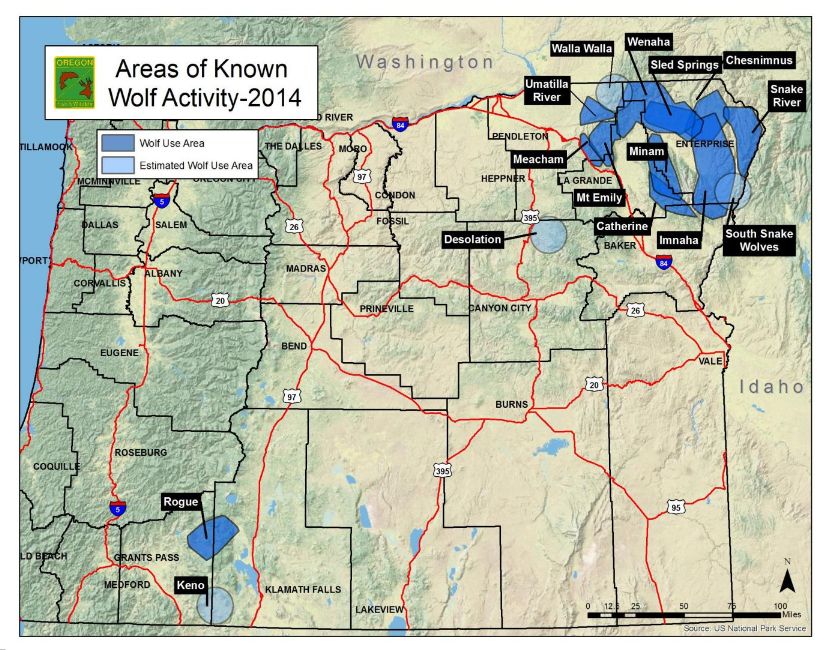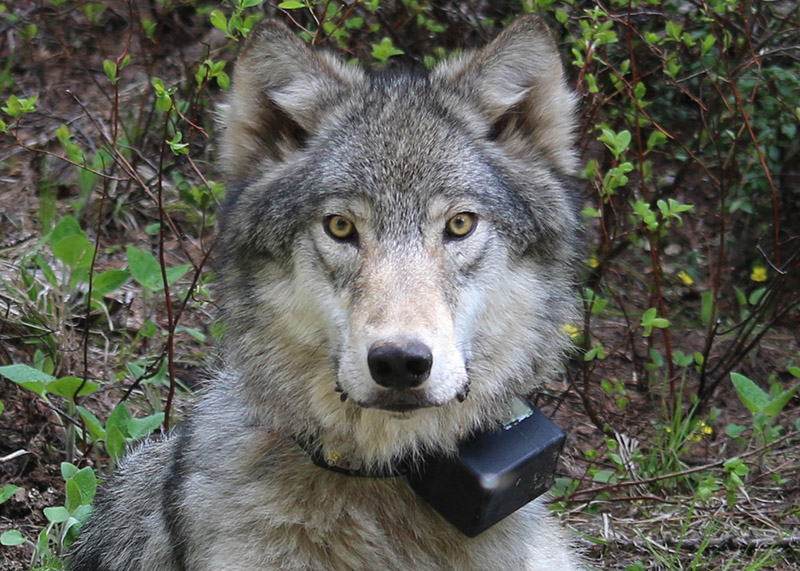 The Oregon Department of Fish and Wildlife (ODFW) updated the state’s known wolf population for 2014. The Agency confirmed at least 77 wolves in 9 packs in the state. That includes 26 pups less than a year old. Even as the population grew, livestock losses to wolves decreased as the state continued to focus on conservation and non-lethal conflict prevention. Agency staff will present a full report to the ODFW Commission on March 6, 2014. The report can be found here: http://tinyurl.com/2014oregonwolves.
The Oregon Department of Fish and Wildlife (ODFW) updated the state’s known wolf population for 2014. The Agency confirmed at least 77 wolves in 9 packs in the state. That includes 26 pups less than a year old. Even as the population grew, livestock losses to wolves decreased as the state continued to focus on conservation and non-lethal conflict prevention. Agency staff will present a full report to the ODFW Commission on March 6, 2014. The report can be found here: http://tinyurl.com/2014oregonwolves.
Despite the modest increase in the wolf population, less than 10 wolves are confirmed west of Interstate-84. That includes OR-7 (also known as Journey) and at least 3 of his pups that survived the year. The increase of 13 wolves is an important milestone in Oregon’s ongoing wolf recovery, but this year, conservationists are as concerned as they are celebratory. Wolves in eastern Oregon are now under “Phase II” management triggering a status review for wolves across the state – putting protections seen as critical to successful recovery at risk.
Below are statements from Oregon Wild:
“The slower growth rate for Oregon's wolf population in 2014 should give ODFW all the reason in the world to move slowly in considering whether or not to remove protections. In recent years, we've celebrated the increase in the wolf population, but this year it’s far less than most people predicted. The population remains fragile. You’ll struggle to find a credible scientist willing to say a couple dozen wolves in the northeast corner of the state is a real recovery. ODFW must resist giving in to political pressure, declare mission accomplished, and turn their back on important protections for wolves that have gotten this far.”
- Steve Pedery, Conservation Director
“For the third year in a row, Oregon was the only state with a meaningful wolf population that did not kill wolves. Instead, thanks to a historic legal settlement, the state focused on conservation, education, and non-lethal conflict prevention. Oregon is a model for the rest of the country. While the wolf population continued to grow, conflict continued to stay low. That stands in direct contrast to places like Idaho, Wyoming, and Washington that showed killing only increases conflict.”
- Rob Klavins, Northeast Oregon Field Coordinator
“In recent years, Oregon has done a pretty good job balancing the state’s conservation values and commitment to science against legitimate concerns and fear of the big bad wolf. But we’re a long way from ‘happily ever after…’. Oregon’s wolf plan has worked for all but the most extreme voices and moved recovery forward in a way we can all celebrate. As ODFW ponders the future, we’d all be best served by doubling-down on success, not turning our backs on the progress we've made.”
- Quinn Read, Wildlife Coordinator
 Photo of Minam Pack collared wolf & map courtesy ODFW.
Photo of Minam Pack collared wolf & map courtesy ODFW.

